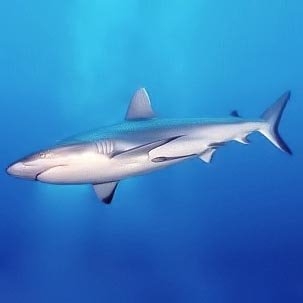 Close Topic Options
Close Topic OptionsShark Research
Shark Research - Sciences, Education, Art, Writing, UFO - Posted: 24th Jul, 2021 - 3:01pm
Shark Research
SHARKS WARM UP MUSCLES TO CHASE PREY
Salmon sharks may have a reputation as cold-blooded killers, but their muscles work like warm-blooded mammals, Canadian researchers have found. Ref. Source
Image by By original author is Fbattail, the image is cropped by Chris huh - Original image: Carcharhinus-amblyrynchos.jpg by Fbattail at fr.wikipedia, March 14, 2004cropped image: Greyreefsharksmall.jpg by Chris huh at en.wikipedia, August 29. 2006Transfered to Commons by Harryemi, September 21, 2008, CC BY-Specific Action: 3.0, Source 7p

Shark Research (Hover)
Shark Research UFO & Writing Art Education Sciences
Shark population threatened due to fin harvesting
A recent study shows that effective shark conservation in Indonesia only works when shark protection through no-fishing zones is combined with efforts to involve local communities in the management of their own fisheries and by providing alternatives to sustain their livelihoods. Ref. Source 8o.
Research Shark
Basking sharks gather in large groups off northeast US coast. Groups of basking sharks ranging from as few as 30 to nearly 1,400 individual animals have been observed aggregating in waters from Nova Scotia to Long Island. While individual sightings are fairly common, seeing large groups is not. The reason why the animals congregate has not been clearly determined, and observations of these aggregation events are relatively rare. Source 9q.
Shark Research
New 3D images of shark intestines show they function like Nikola Tesla's valve. For more than a century, researchers have relied on flat sketches of sharks' digestive systems to discern how they function -- and how what they eat and excrete impacts other species in the ocean. Now, researchers have produced a series of high-resolution, 3D scans of intestines from nearly three dozen shark species that will advance the understanding of how sharks eat and digest their food. Source 3s.
 TOPIC: Shark Research
TOPIC: Shark Research Learning more about Sharks
Learning more about Sharks